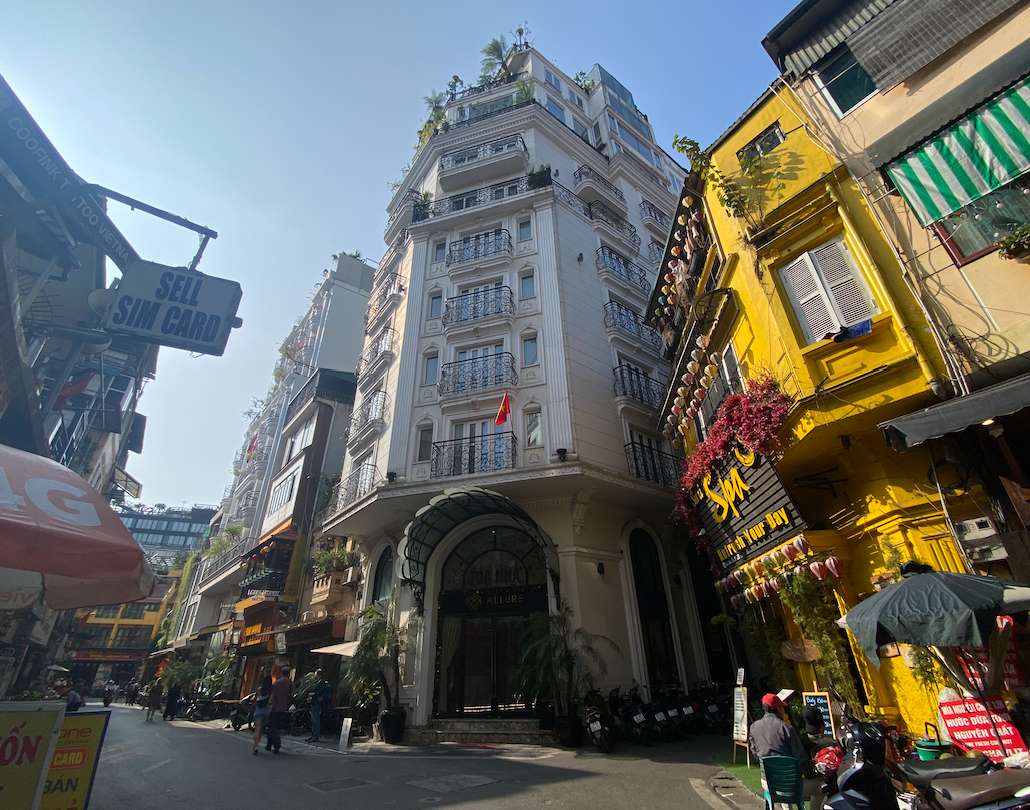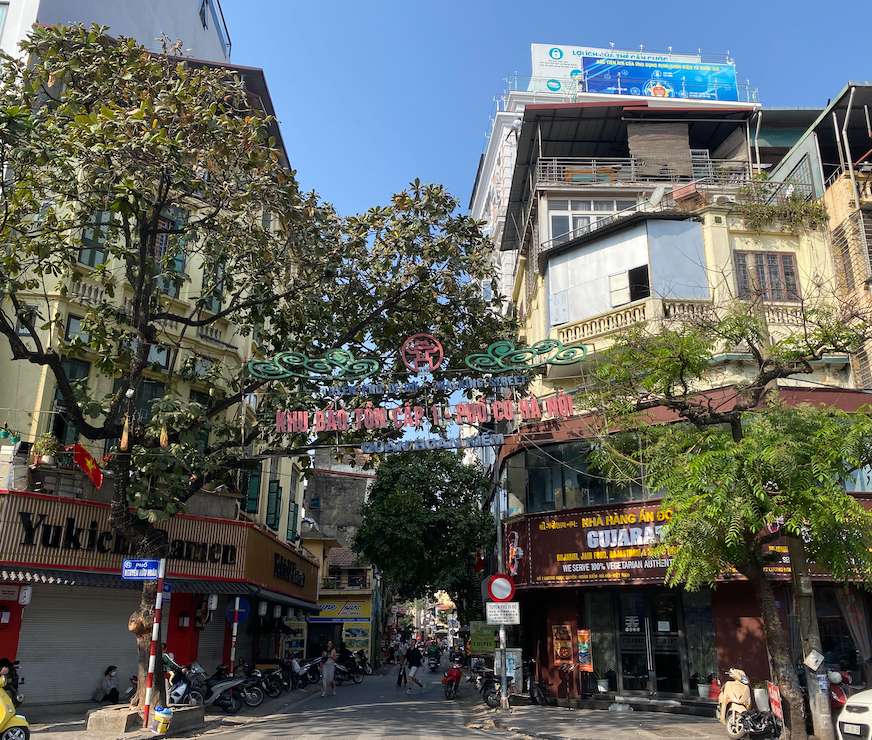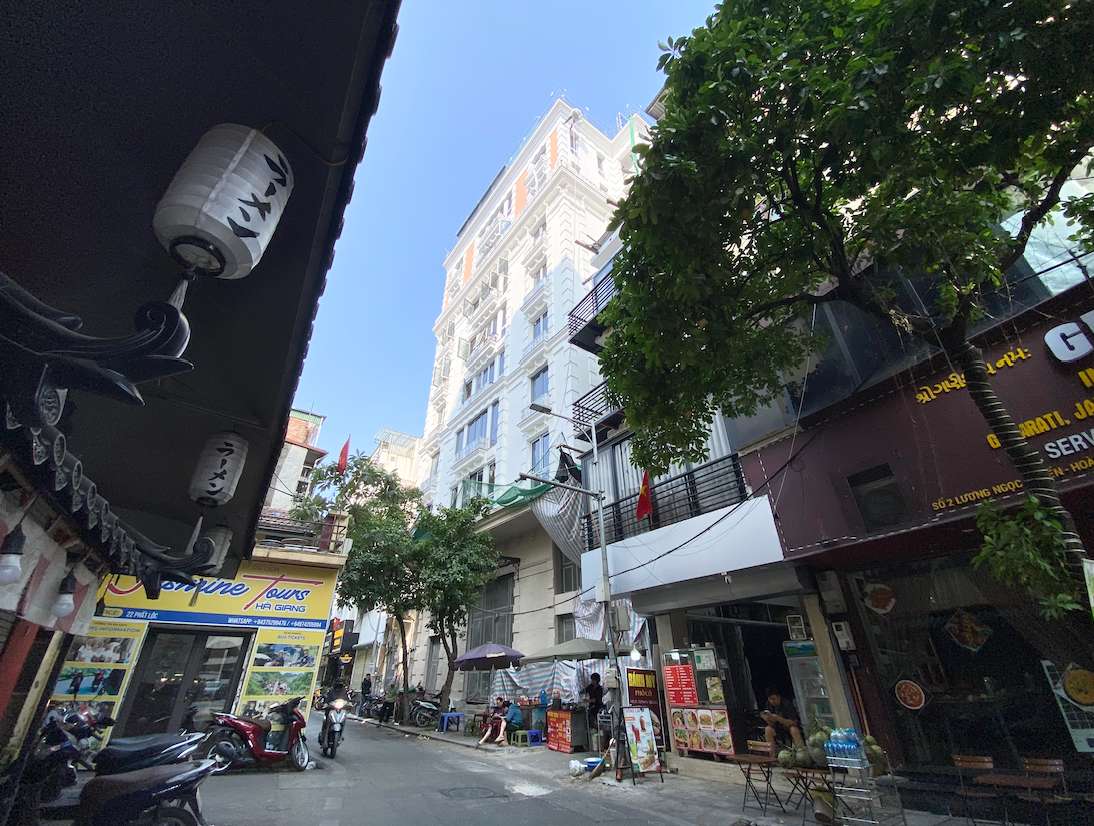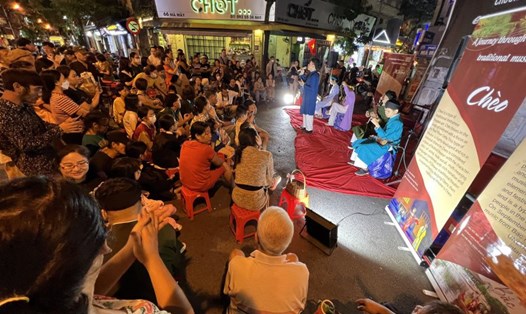Investors struggle to build hotels in old quarter
With the location of “every inch of land is gold”, investing in building hotels in Hanoi’s Old Quarter is currently facing many difficulties. Due to the lack of separate regulations on planning and building hotels and houses, many investors have to “cross the line” to build hotels.
Walking along Nguyen Sieu, Ngo Gach, Luong Ngoc Quyen streets… in the center of Hoan Kiem Old Quarter, Hanoi, it is not difficult to see 9-10 storey buildings.
These buildings are not only built high but also have 1-2 basements. All of these buildings are hotels serving tourists.

Mr. Ngo Van Phong (name changed) - the investor of a hotel in the heart of the old town said that according to current regulations, the construction of hotels and houses in the old town is not separated. Accordingly, when building a hotel, it must meet requirements such as height (no more than 4 floors) and construction density (70 - 80%). This puts investors in a dilemma.
Because building a hotel in the old town requires a large investment. If only 4 floors are built, the construction density will be limited, and the capital will never be recovered. Meanwhile, the demand for accommodation of tourists right in the old town is very high.
According to Mr. Phong, for the old quarter, preserving traditional values is the most important. However, preservation needs to be associated with promoting heritage. Tourists from other provinces, especially international visitors who travel long distances, not only demand to admire ancient values but also need to be well served with convenient living needs such as eating, staying, resting, etc. Therefore, according to Mr. Phong, the authorities need to separate regulations on building private houses from building hotels.
“Of course, hotel construction in the old town cannot be widespread. Hotel construction requires strict licensing from state agencies. But once licensed, there must be a mechanism to ensure such as regulations on height and appropriate density. Only then can investors achieve feasibility in construction, both recovering capital and ensuring no legal risks, and the state can also manage better,” Mr. Phong expressed.
The difficulty in building hotels in Hanoi's Old Quarter not only affects investors but also tourists.

Ms. Ly Quyen, a tourist from China, said that after a year of hard work, she chose Hanoi to travel with her close friends. Along with visiting ancient Vietnamese architecture, Ms. Ly Quyen's group wanted to enjoy all the high-class amenities. However, in the core area, it was very difficult to find a 5-star hotel with enough rooms. Therefore, Ms. Ly's group had to choose a hotel in the neighboring area, making travel quite inconvenient.
There needs to be a legal corridor for hotel construction in the old quarter.
Due to the shortcomings in investing in building hotels in the old quarter, many experts believe that there should be separate regulations for building hotels and houses in this area. First of all, it is necessary to study regulations allowing the construction of hotels with appropriate height and density (larger than the level of houses).
Speaking with Lao Dong, Mr. Nguyen Tien Dat, Vice President of Hanoi Tourism Association said: "If 100% of establishments are required to comply with regulations, I think most hotels in the Old Quarter will have to close."
Mr. Dat analyzed that currently, the most hotels in the old quarter are three-star, followed by two-star hotels or hostels (cheap motels), homestays, or cheap dorms (collective rooms) with prices of only about 200,000 VND per night, but guests share living space with many other people.
The reason why there are not many high-class hotels (4 - 5 stars) is because hotels in the Old Quarter must comply with the regulations of many departments, such as the Law on Tourism; Construction Law; General planning for construction of Hanoi Capital until 2030, vision to 2050; regulations of the Old Quarter Management Board; Fire prevention and fighting...
However, in reality, facilities face many difficulties in strictly complying with all regulations.
“As a resident of the Old Quarter, I understand the situation of many buildings in the Old Quarter. There are hotels that were built decades ago with old architecture and are licensed to operate as hotels. Meanwhile, newly built hotels cannot be built with similar architecture because current laws do not allow it,” Mr. Dat emphasized.
Mr. Dat added that currently, many parties have to find ways to make full use of the area because the old town is an area where "every inch of land is gold".
Regarding the regulations on the number of floors or height, many hotels will find ways to "circumvent the law". For example, the front is only about 4 floors, but the back will be stepped up to 6 - 7 floors.
While regulations for hotels are very strict, management of homestays, hostels or dorms is not as strict.
It is the low-cost accommodation business models that put pressure on the infrastructure of the Old Quarter. Because these establishments serve a large number of tourists with low spending levels, but affect the infrastructure and environment, such as causing power overload, noise pollution or not ensuring the work of temporary residence and temporary absence declaration.

Speaking to Lao Dong, Mr. Matthew Powell - Director of Savills Hanoi said that the prices and occupancy rates of hotels in the Old Quarter are quite volatile. There are quite a few lower quality hotels for rent at cheap prices but the occupancy rate is not high. Meanwhile, higher-end hotels are crowded. However, the number of these hotels is not much.
“With the current regulations, I think the challenge is mainly the amount of land and the height of the building that owners can build. On some streets, they can build higher, which increases efficiency, and increases the number of rooms,” said Matthew Powell.
It can be said that preserving the old town is the most important goal. However, preservation needs to be associated with promoting its value. Therefore, the authorities need to consider planning the construction of modern hotels in the old town area with appropriate density to ensure sustainable tourism development.











